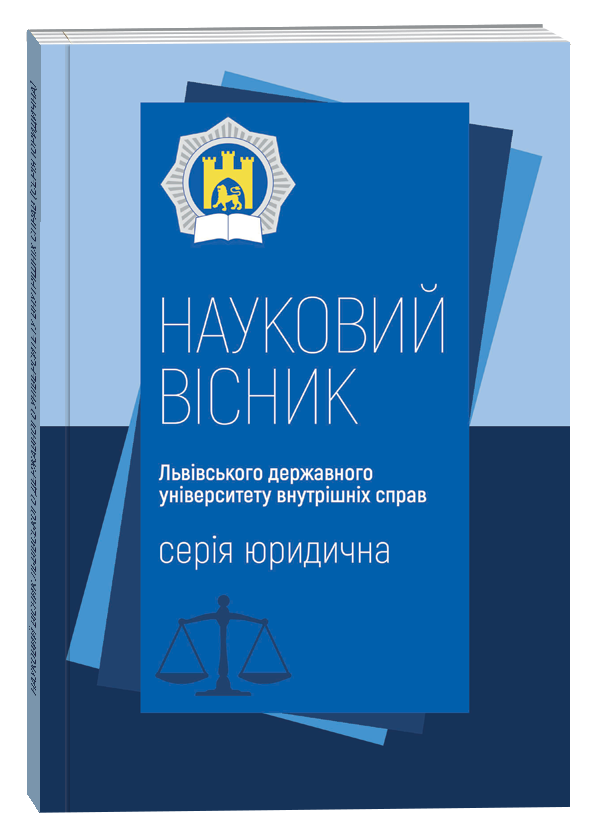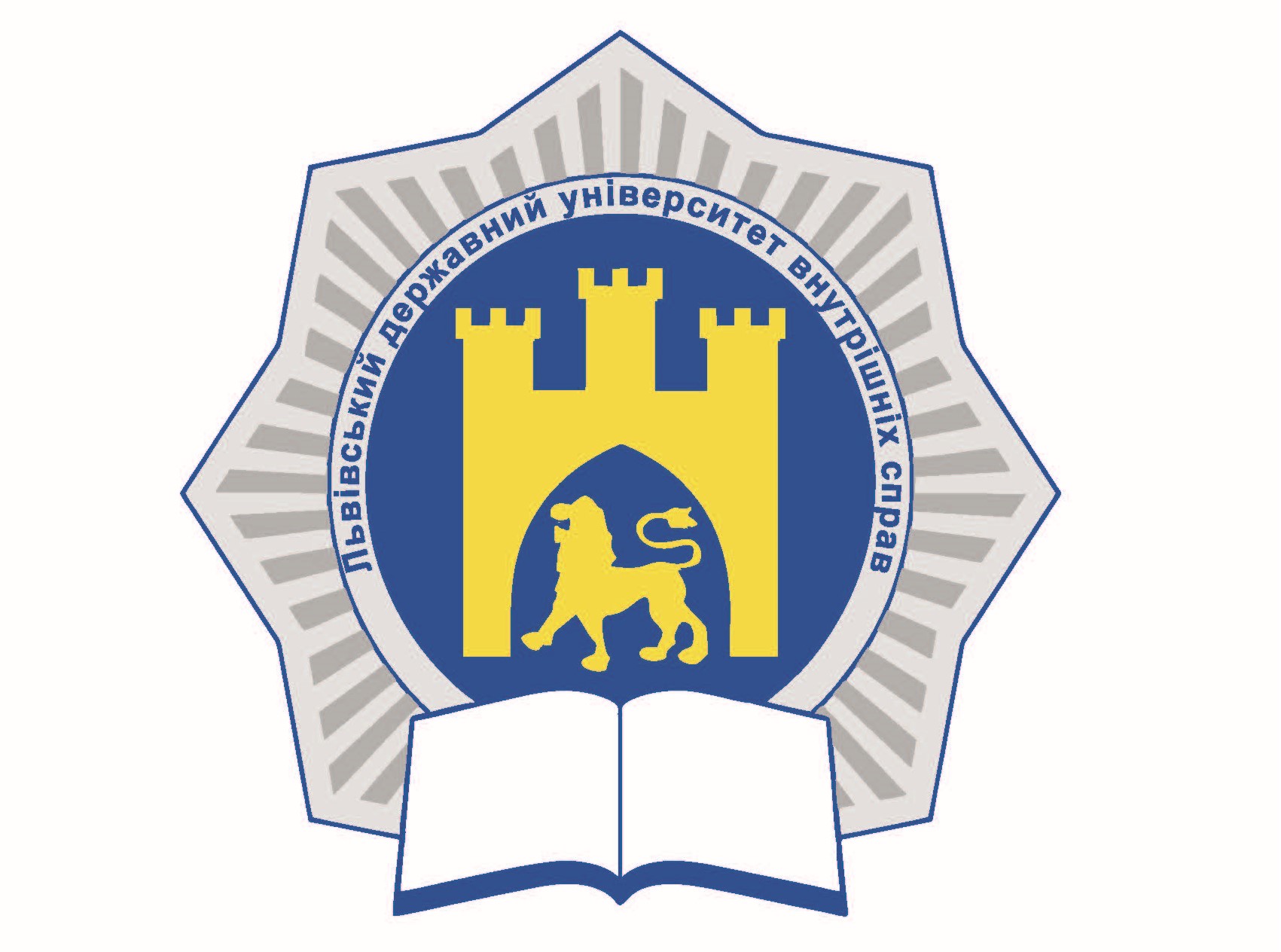CHARACTERISTICS OF THE RISK OF ILLEGAL INFLUENCE ON THE VICTIM, WITNESS, ANOTHER SUSPECT, ACCUSED, EXPERT, SPECIALIST IN THE SAME CRIMINAL PROCEEDINGS
DOI:
https://doi.org/10.32782/2311-8040/2025-3-16Keywords:
risk of illegal influence, participants in criminal proceedings, risk assessment, sufficient data about threat, security measures, victim, witness, suspect, accused, expert, specialist, risk assessment criteriaAbstract
The article examines the legal nature and substantive characteristics of the risk of illegal influence on participants in criminal proceedings as an independent legal phenomenon. The concept of the risk of illegal influence, its structural elements, evaluation criteria and factors that determine the occurrence of such risk are revealed. The category of “sufficient data” about the threat to participants in proceedings in the context of Article 52 of the Criminal Procedure Code of Ukraine as a basis for applying security measures is analyzed.Objective and subjective factors that form the risk of illegal influence are investigated, including the nature of the crime, the identity of the suspect or accused, their connections and resources, previous unlawful behavior.The specifics of the risk for different categories of participants in proceedings are considered: victims, witnesses, other suspects and accused in group crimes, experts, specialists. The necessity of a differentiated approach to risk assessment depending on the procedural status of the person and their role in proving is substantiated. The practice of the Supreme Court of Ukraine regarding the establishment of the presence of the risk of illegal influence and the application of security measures is analyzed. A comparative analysis of approaches to assessing the risk of illegal influence in criminal proceedings of the USA, Germany and Great Britain has been carried out. A model for comprehensive assessment of the risk of illegal influence is proposed, which includes threat indicators, an assessment scale and an algorithm for making decisions on the application of security measures. Promising directions for improving normative regulation and law enforcement practice in the field of counteracting illegal influence on participants in criminal proceedings have been identified.
References
Кримінальний процесуальний кодекс України від 13.04.2012 № 4651-VI. URL: https://zakon.rada.gov.ua/laws/show/4651-17 (дата звернення: 14.07.2025).
Кримінальний кодекс України від 05.04.2001 № 2341-III. URL: https://zakon.rada.gov.ua/laws/show/2341-14 (дата звернення: 14.07.2025).
Про забезпечення безпеки осіб, які беруть участь у кримінальному судочинстві : Закон України від 23.12.1993 № 3782-XII. URL: https://zakon.rada.gov.ua/laws/show/3782-12 (дата звернення: 14.07.2025).
Конвенція про захист прав людини і основоположних свобод від 04.11.1950. URL: https://zakon.rada.gov.ua/laws/show/995_004 (дата звернення: 14.07.2025).
Doorson v. Netherlands, № 20524/92, ECHR, 26 March 1996. URL: https://hudoc.echr.coe.int/eng#{% 22itemid%22:[%22001-57972%22.
18 U.S. Code § 1512 – Tampering with a witness, victim, or an informant. Legal Information Institute, Cornell Law School. URL: https://www.law.cornell.edu/uscode/text/18/1512.
Criminal procedural laws across the European Union – A comparative analysis of selected main differences and the impact they have on the prevention and investigation of crime. European Parliament, 2018. https://doi.org/10.2861/583320.
Good practices for the protection of witnesses in criminal proceedings involving organized crime. United Nations Office on Drugs and Crime. New York, 2008. 68 p. URL: https://www.unodc.org/documents/middleeastandnorthafrica/organised-crime/Good_Practices_for_the_Protection_of_Witnesses_in_Criminal_Proceedings_Involving_Organized_Crime.pdf.
Witness protection as an indispensable tool in the fight against organised crime and terrorism. Parliamentary Assembly of the Council of Europe. Resolution 2299 (2019). URL: https://assembly.coe.int/nw/xml/XRef/Xref-XML2HTML-en.asp?fileid=21551.
Kusak M. Common EU Minimum Standards for Enhancing Mutual Admissibility of Evidence Gathered in Criminal Matters. European Journal of Criminal Policy Research. 2017. Vol. 23. P. 337–352. https://doi.org/10.1007/s10610-016-9323-3.
Bean P., Billingsley R. (eds.) Informers: policing, policy and practice. Devon: Willan Publishing, 2001. 224 p.
Victim witness intimidation. U.S. Department of Justice, Office of Justice Programs. 1995. URL: https://www.ojp.gov/pdffiles/witintim.pdf.
Шило О. Г. Заходи забезпечення кримінального провадження: поняття, підстави та процесуальний порядок застосування. Вісник кримінального судочинства. 2017. № 1. С. 56–65.
Аленін Ю. П., Гловюк І. В. Кримінальний процес України : підручник. Харків : Право, 2019. 824 с.
Капліна О. В. Забезпечення безпеки учасників кримінального судочинства: проблеми теорії та практики. Науковий вісник Ужгородського національного університету. Серія: Право. 2020. Вип. 60. С. 178–182. https://doi.org/10.24144/2307-3322.2020.60.31.
Лобойко Л. М. Кримінальний процес : підручник. Київ : Істина, 2020. 632 с.
Татаров О. Ю. Заходи процесуального примусу в кримінальному провадженні : дис. ... д-ра юрид. наук: 12.00.09. Київ, 2018. 495 с










